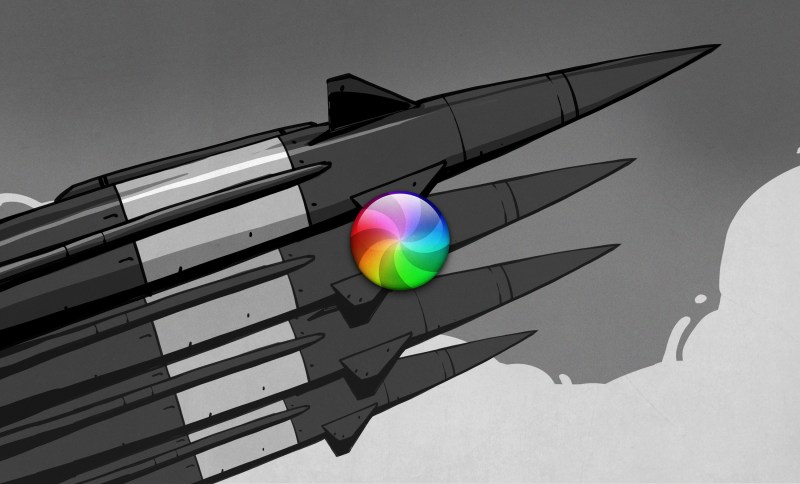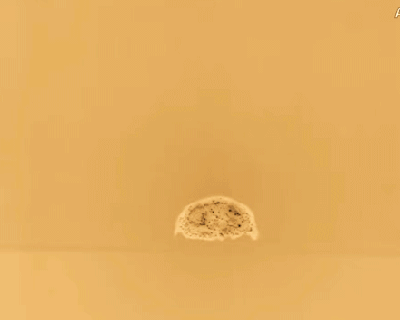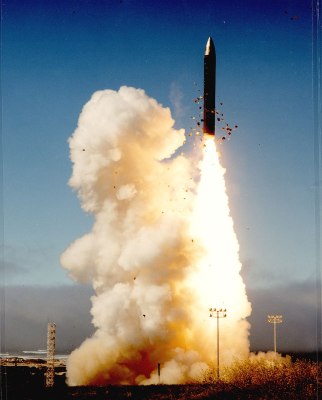

If They Fire The Nukes, Will They Even Work?
source link: https://hackaday.com/2023/04/06/if-they-fire-the-nukes-will-they-even-work/
Go to the source link to view the article. You can view the picture content, updated content and better typesetting reading experience. If the link is broken, please click the button below to view the snapshot at that time.

If They Fire The Nukes, Will They Even Work?

2022 was a harrowing year in a long line of harrowing years. A brutal war in Europe raised the prospect of nuclear war as the leaders behind the invasion rattled sabers and made thinly veiled threats to use weapons of mass destruction. And all this as we’re still working our way through the fallout of a global pandemic.
Those hot-headed threats raise an interesting question, however. Decades have passed since either Russia or the United States ran a live nuclear weapons test. Given that, would the nukes even work if they were fired in anger?
Check and Test

The Trinity nuclear test was the first detonation of a nuclear weapon, but sadly not the last. Credit: USDE, public domain
If there’s one thing engineers like to do, it’s to test things. It’s all well and good to draw something up on paper or put it together in the lab. But until you’ve switched it on and made it do its thing, it’s hard to know if it’s going to act as expected.
The problem with nuclear weapons is that testing them is a nasty business. It tends to leave giant craters in the landscape, and pumps radioactive dust into the atmosphere to spread over neighbouring populations. For this reason, most countries signed the Partial Test Ban Treaty of 1963, which banned all nuclear weapons testing save for that done underground. This later expanded into the Comprehensive Nuclear Test Ban Treaty, formed in 1996, that nevertheless has never officially come into effect due to several holdout states.
Treaty or no treaty, nuclear weapons tests have become exceedingly rare in recent decades. The last atmospheric test was held by China in 1980, while North Korea has executed nuclear tests as recently as 2017. When it comes to the major players on today’s world stage, the US executed its last underground nuclear test in 1992, and the Soviet Union in 1990. China is known to have last ran a test in 1996, while India and Pakistan both ran tests in 1998.

The US held its last live nuclear weapons test in 1992, as part of Operation Julin. Credit: LANL, public domain
Thus far, though, we’ve only discussed the testing of nuclear warheads themselves. Testing of complete nuclear weapons systems is even rarer. Nuclear weapons are often intended for delivery by missiles, but the weapons have rarely been tested and fired as complete assemblies. The US, Soviet Union, and China ran minimal tests in this regard in the 1960s. However, since then, those tests have not been repeated. Furthermore, no live test of an nuclear-armed intercontinental ballistic missile has ever taken place. That’s often put down to the risk involved. When the warhead is on the ground, you can press a button and be pretty confident on where it’s going to end up. When the warhead is on the end of a rocket, there’s always the risk that it could end up somewhere inconvenient, or that the rocket could blow up on the pad. Unlike a static weapon test, there can be very deadly consequences of a nuclear missile test gone wrong, so they simply don’t happen.
The complicated political status of nuclear weapons creates other problems, too. Production of nuclear weapons largely stalled out after the frenzied build-up of the Cold War era. As countries worked to slim down their warhead stockpiles, there was no need to keep factories running, and many were shut down. This has caused problems for those charged with maintaining decades-old weapons. Delicate mechanical mechanisms can foul up or wear out over time, explosive components can falter, while electronic components have a limited lifespan, too. In a nuclear weapon, perfect performance and timing is critical. It doesn’t take much to spoil a weapon’s yield if a component isn’t operating perfectly.
In the US in particular, this came into focus in the early 2000s. There was a crisis as weapons technicians realized they no longer had a supply of a classified material called FOGBANK, which was crucial to US nuclear weapons. Worse, the records of the material’s production were sparse, the original facility had closed down, and many staff were no longer around to recall how it was done. It took many years and tens of millions of dollars for the National Nuclear Security Administration to reproduce the material.
This creates an unnerving situation when contemplating the nuclear militaries of the world. They’re armed with untested warheads of mass destruction mounted upon weapons systems that they haven’t been fully tested with.

ICBMs with multiple independent re-entry vehicles are the mainstay of land-based nuclear attack forces. Despite this, ICBMs have never been tested with live warheads. Credit: USAF, US Army, public domain
Two things give military commanders confidence that their weapons will still set enemy cities aglow if ever called upon. The first is regular maintenance. Nuclear weapons are, in a way, much like the truck parked up at your aunt’s farm. Leave it in a shed unattended for 20 years, and it’s unlikely to start when you jump in and turn the key. Alternatively, start it up every few months, and give it regular care and attention, and you can be relatively confident that it will roar into life when needed.
The second aspect is one of simulation. Engineers and physicists have incredibly advanced simulations of nuclear phenomena which are used to model the performance of weapon components when they can’t be tested. Simulation isn’t a perfect science, of course, but the physics of nuclear weapons is relatively well understood by those in the know. This is also aided by the immutability of the laws of physics. The behavior of atoms undergoing fission and fusion is the same today as it was back in 1945. If you build and maintain the weapons to the same specification as they were designed, they should perform in the same way they did many decades ago.
It’s nice to think that even if the button was pressed, the nuclear weapons fired would fail to annihilate the world as we know it. Unfortunately, it’s likely not the case. Even at a 50% failure rate, a full-scale nuclear war would ultimately destroy society as we know it. As for nuclear weapons that “fizzle” and fail to detonate as expected, they can still cause great harm. Such a failure is still likely to spread radioactive material over a great area, and cause serious casualties. We can’t rely on incompetence to save the world from nuclear war.
Ultimately, ideally we’ll never know if the world’s nuclear arsenals are as potent as their owners say they are. On the amphitheatre of mutually assured destruction, of course, the perceived threat of the weapons on paper is the most important thing, anyway. Regardless, these untested weapons remain sitting in bunkers around the world, waiting for the call that must never come.
Recommend
About Joyk
Aggregate valuable and interesting links.
Joyk means Joy of geeK